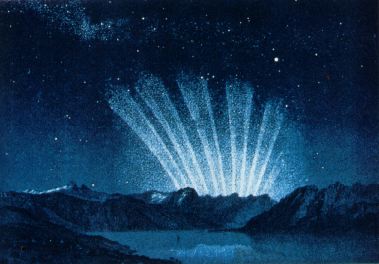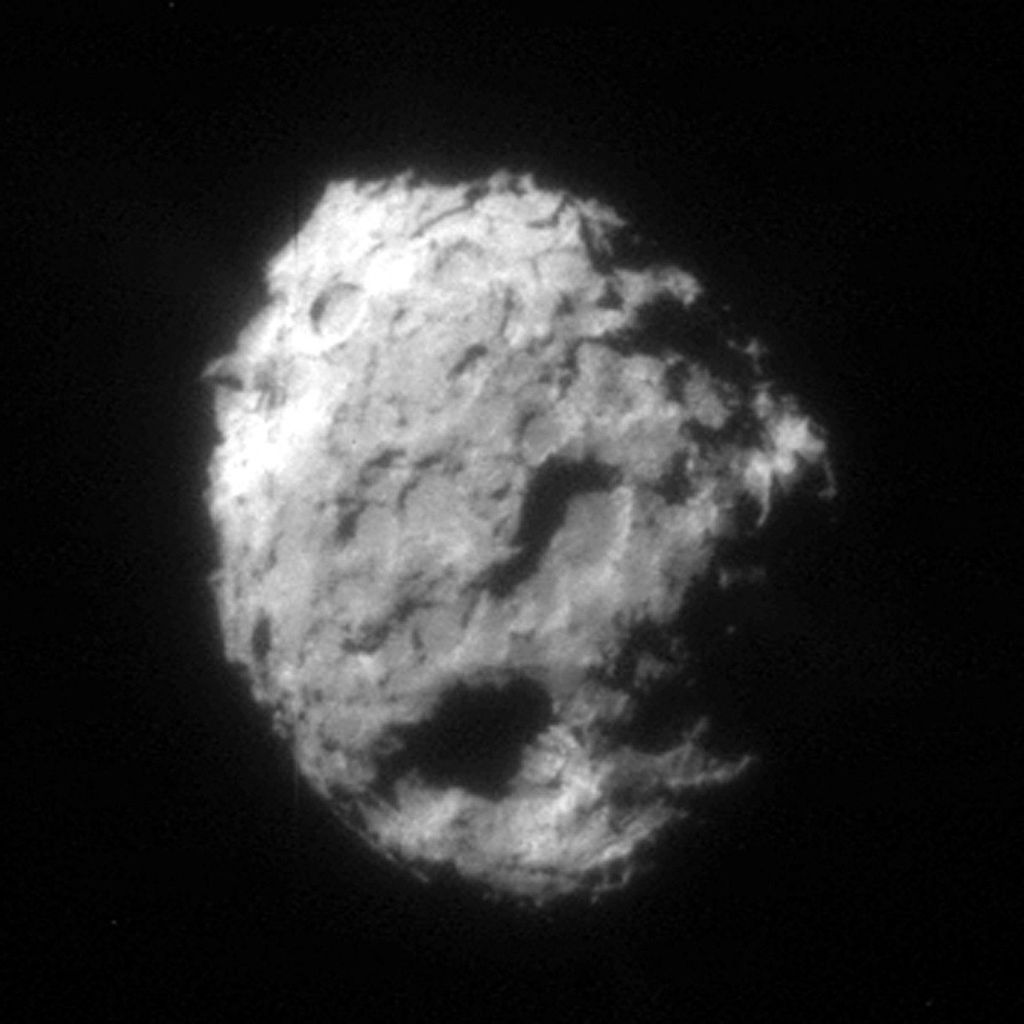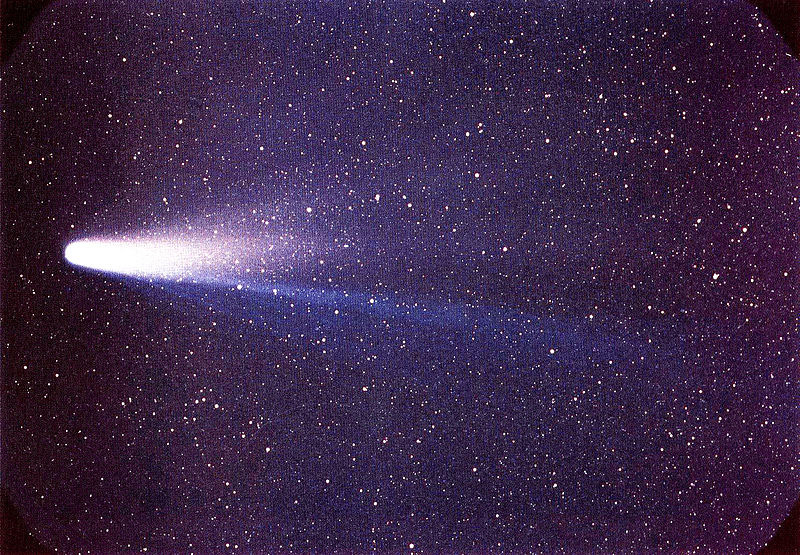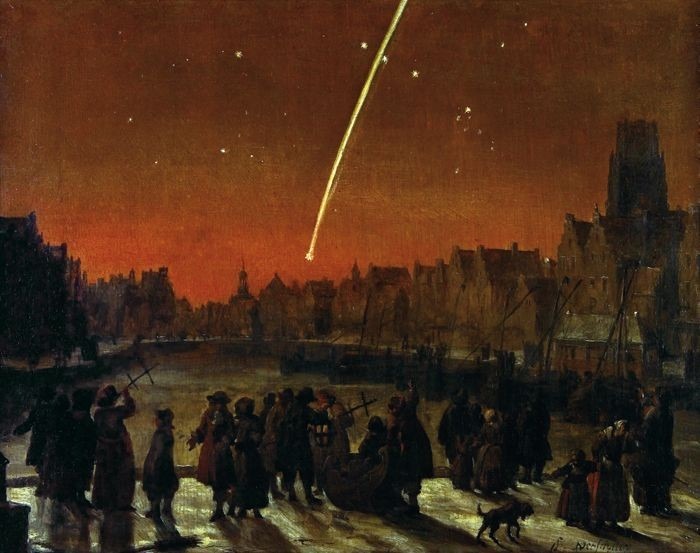Guide to Rare Comet Sightings Through Time
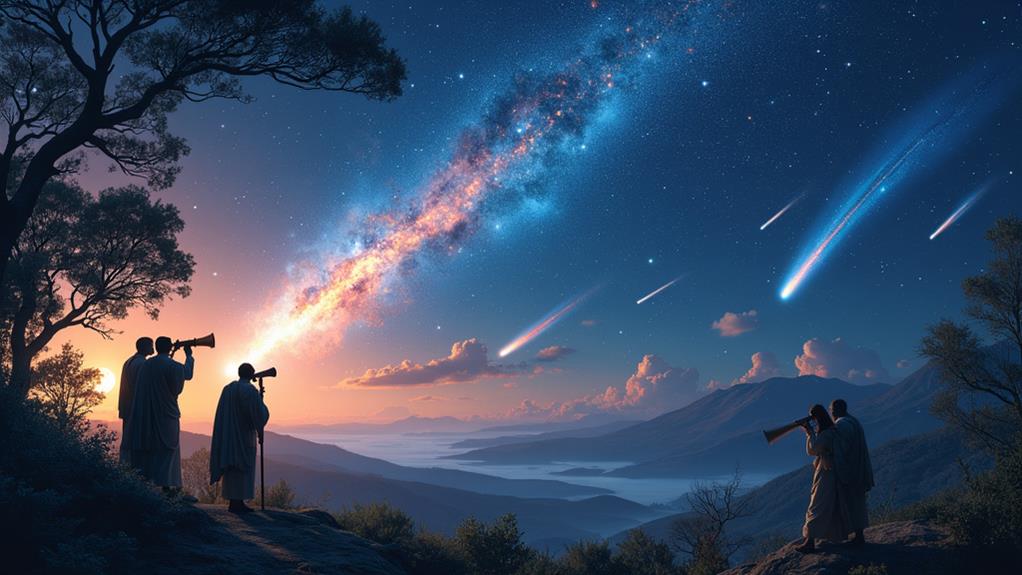
You'll find that rare comet sightings have always intrigued humanity, often seen as omens of significant events. From Halley's Comet marking the Battle of Hastings in 1066 to the awe-inspiring Great Comet of 1811 visible for 17 months, each appearance has left an indelible mark on history. Cultural interpretations vary, with comets depicted ominously in art and literature. Observing these icy wanderers involves using astronomy tools and finding dark, clear skies. Theories about their origins and nature continue to evolve, offering deeper insights into our solar system. Uncover more about these celestial marvels and their historical significance.
Key Takeaways
- Halley's Comet, with a 75-76 year orbit, is historically linked to significant events like the Battle of Hastings in 1066.
- The Great Comet of 1811 was visible for 17 months, becoming one of the brightest comets and sparking widespread awe.
- Comet Hale-Bopp, discovered in 1995, remained visible from 1996 to 1997, captivating the public with its brightness.
- Tycho Brahe's 1577 observations and Edmond Halley's orbital calculations revolutionized cometary science and prediction.
- Comets are composed of ice, dust, and rocky material, with tails formed by solar wind, providing insights into early solar system materials.
Historical Perception of Comets
Throughout history, comets have stirred the imaginations and fears of societies across the globe. Primitive societies often viewed a comet as an ominous sign, linking its sudden appearance to disaster and divine influence. This fear is well-documented in Greek literature, where works like Homer's "Iliad" associated comets with significant events such as disease and war. You can see how deeply rooted this superstition was, reflecting the general fear they inspired.
One of the most famous examples is Halley's Comet, which has coincided with numerous historical events. In 1066, its appearance was noted during the Battle of Hastings, reinforcing the belief that comets herald major changes. Even Pope Calixtus III, in 1456, excommunicated Halley's Comet, branding it as an agent of the devil. This act showcased the intense fear and superstition surrounding comets during that period.
The cultural significance of comets is also evident in art, like the Bayeux Tapestry, which depicts Halley's Comet. These historical narratives highlight how comets were perceived as more than just celestial phenomena—they were seen as harbingers of significant events influenced by divine forces, instilling both awe and fear.
Notable Comets in History
Let's investigate some of the most notable comets in history that have captured human fascination and scientific interest alike. Halley's comet, with an orbital period of 75-76 years, has been a guiding light in the dark sky, linked to significant events like the Battle of Hastings in 1066 and Pope Calixtus III's excommunication of it in 1456. Its periodic returns make it a hallmark among bright comets.
The Great Comet of 1811, visible to the naked eye for an astonishing 17 months, caused widespread speculation and awe. People couldn't help but wonder about its implications as it graced the sky. Fast forward to the late 20th century, and you'll find Comet Hale-Bopp, which from 1996 to 1997, became the brightest comet visible to millions, its extended presence etching it into public memory.
Comet Shoemaker-Levy 9 made headlines in 1994 when it collided with Jupiter, offering invaluable data on comet impacts on gas giants. The Great January Comet of 1910, seen even in daylight, stunned observers with its tail stretching 50 degrees across the sky. Each of these comets, with their closest approach to Earth, left an indelible mark on history.
Discoveries and Theories
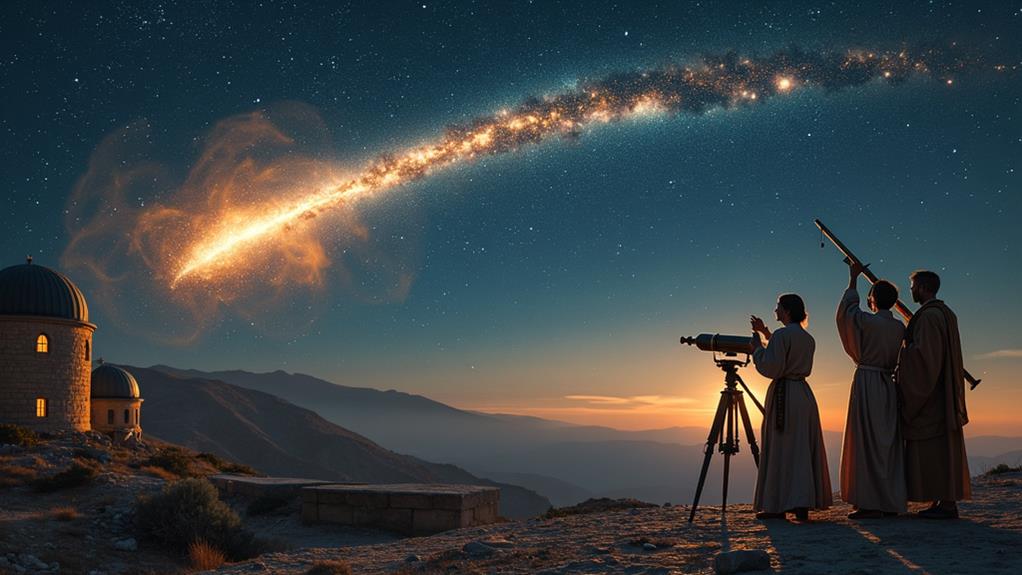
As we move from recounting the tales of famous comets to unraveling the scientific breakthroughs they've inspired, you'll find a rich history of exploration and evolving theories. Early Greek astronomers debated the nature of comets, with some considering them atmospheric phenomena. However, Tycho Brahe's observations of the comet in 1577 established that comets were distant celestial bodies, shattering prior misconceptions.
Edmond Halley made a monumental leap in cometary science by calculating the orbital paths of comets. His prediction of Halley's Comet's return in 1759 was groundbreaking, proving that comets could have predictable orbits. This advancement set the stage for future revelations and theories about cometary origins and composition.
Theories about comet nuclei evolved considerably over time. The Sandbank Model proposed by Lyttleton and the Dirty Snowball Model by Whipple offered different perspectives. Whipple's model, which described comet nuclei as icy bodies mixed with dust and rocky material, gained support through radar data and spacecraft encounters. The 1986 encounter with Comet Halley confirmed this, revealing the icy, dusty nature of comet nuclei.
These revelations also pointed to the Oort Cloud and Kuiper Belt as potential reservoirs of comets, deepening our understanding of their origins and travels through the Solar System.
Public Interest and Fear
Despite their celestial beauty, comets have historically sparked intense fear and fascination among the public. Throughout history, comets have often been seen as harbingers of doom. Such public perception was particularly evident with the Great Comet of 1811, which was visible for 17 months and led many to speculate about impending misfortune. This comet, along with others, fueled a sense of uncertainty and dread.
Halley's Comet, perhaps one of the most famous, was excommunicated by Pope Calixtus III in 1456. He labeled it an agent of the devil, underscoring the fear and panic that comets could evoke. The appearance of Bielas Comet in 1872 saw people rushing to confessionals, gripped by panic and fear of divine wrath. These reactions highlight how comets were often linked to celestial phenomena that foretold disaster.
Even in modern times, the unpredictability of comets continues to intrigue and unsettle people. For instance, the disintegration of Comet Leonard in 2021 captivated the public, stirring both fascination and apprehension. Rare comets, with their erratic behavior and mysterious origins, never fail to invoke deep-seated fears and awe, reflecting our enduring uncertainty about these celestial visitors.
Cultural Impact of Comets

Comets have left an indelible mark on human culture, serving as celestial symbols that weave through myths, legends, and historical events. Throughout history, comets have often been interpreted as ominous signs or harbingers of disaster. Ancient societies associated their appearances with disease, war, and divine influence, embedding them deeply in the fabric of cultural narratives.
One of the most famous depictions of a comet's historical significance is the Bayeux Tapestry, which illustrates Halley's Comet during the Norman Conquest in 1066. This underscores the profound cultural impact comets have had, not just as celestial events but also as symbols of change and foreboding.
Across different cultures, myths and legends have arisen around comets, portraying them as divine messages or symbols of impending doom. The Great Comet of 1811, visible for an extended period, greatly influenced public perception and even sparked celebrations, demonstrating society's fascination with these celestial wanderers.
Comets have also found their way into diverse art forms and literature, enriching cultural expression and narratives. Additionally, they've served as subjects for scientific inquiry, advancing our understanding of the cosmos while reinforcing their enduring cultural significance.
Observing Comets
Observing comets can be a thrilling and rewarding experience for both amateur and seasoned astronomers. To effectively observe a comet, start by checking astronomy magazines and apps for sighting information. Choose a remote location with a clear horizon view to improve visibility. Allow your eyes to adapt to the darkness for at least one hour, and use the averted vision technique to better spot faint comets in the night sky.
Many comets are visible to the naked eye, especially during significant appearances. However, using binoculars or telescopes will enhance the quality of your viewing experience, allowing you to see the comet's bright core and tail more clearly. One of the main observational challenges is the unpredictable behavior of comets, which requires skywatchers to monitor their positions over days to accurately track movement.
Engaging with public observatories and following updates from NASA and other astronomy platforms can provide timely information on comet visibility and ideal viewing conditions. When a bright comet becomes visible, don't miss the opportunity to have a photograph taken, capturing this celestial event for your personal collection. By staying informed and prepared, you can make the most of your comet-watching experience.
Frequently Asked Questions
What Are the Sightings in Ancient Times About Comets?
Did you know that the Great Comet of 1811 was observed for an incredible 17 months? In ancient times, comets were seen as celestial omens with profound cultural significance. Ancient civilizations kept detailed historical records and saw these astronomical observations as mythological interpretations and religious symbols. They believed comets could impact navigation, predicting disasters or fortunes. These ancient beliefs often led to societal panic and religious fervor.
Which Comet Has Been Seen the Most Times?
When discussing which comet has been seen the most times, Halley's Comet stands out. As one of the periodic comets, its appearances have been recorded in historical records for over 2,000 years. This comet's cultural significance and famous sightings, like the Battle of Hastings, highlight its astronomical impact. Advances in observational techniques have made its celestial events well-documented, contributing to comet folklore and our understanding of these fascinating phenomena.
What Is the Rare Comet Soon?
You're about to witness a once-in-a-lifetime spectacle! The upcoming comet, C/2023 A3 Tsuchinshan–ATLAS, promises to light up the sky in a way that historical comets like Halley's never did. Comet visibility will peak around October 12, 2024, marking a magnificent event in comet observations. Myths and folklore often surround these celestial wonders, and this rare comet's characteristics will certainly add to the rich tapestry of comet impact and tracking in human history.
What Comet Was Successfully Predicted to Return 76 Years Later?
You're asking about Halley's Comet, the famous comet that Edmond Halley successfully predicted to return every 76 years. Through his work on comet predictions, Halley studied historical records and used celestial mechanics to calculate its orbit. Halley's Comet is one of the most well-known periodic comets, enchanting public fascination during each appearance. Its predictable cometary orbits are a significant part of comet tracking and hold great astronomical significance.

